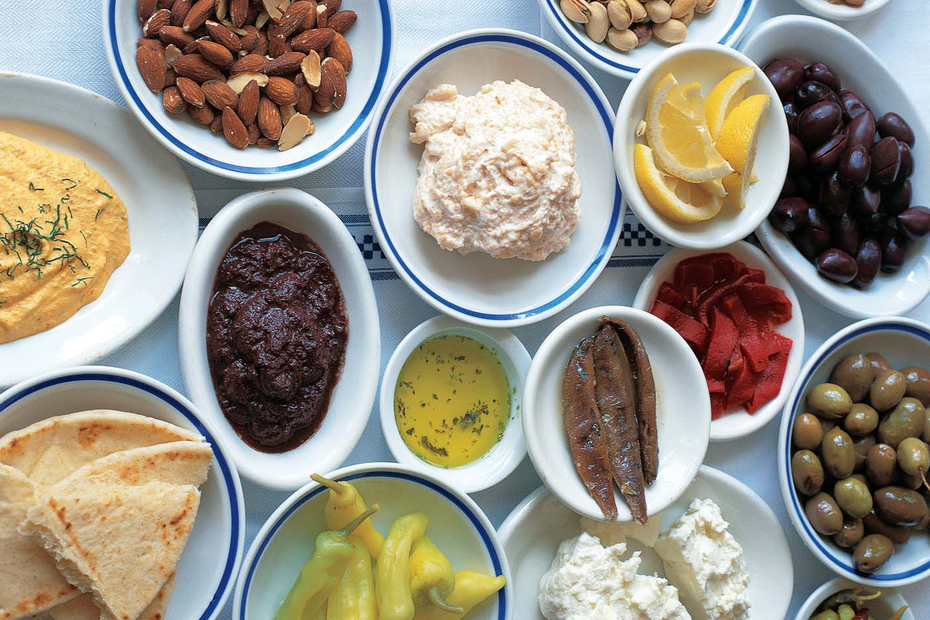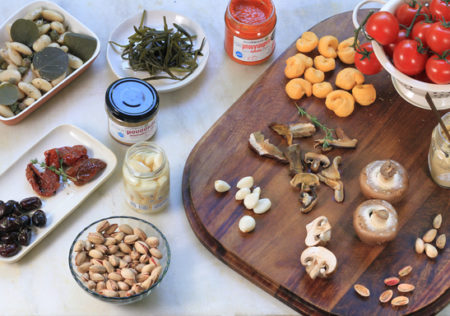Small plates of vibrant food meant to savor and share…that is the basic definition of mezedes (pl.) A meze spread is not meant to be a meal, but a nosh, a communal, convivial landscape of varied dishes perfect for grazing. Variety is always the key: A traditional meze table should be a collection of dishes that vary in texture, flavors, colors, temperatures and types of food. From creamy dips to crisp phyllo or crunchy rusks, from olives and other pickled treats to rich cheeses, fried and baked things, seafood and bits of meat, the meze experience should have a little bit of everything.
But variety begs the question: What do drink with so many seemingly disparate flavors, textures and types of food? Mezedes are meant to be served with alcohol, typically wine or headier spirits such as ouzo, tsipouro or raki (the latter two grape distillates).

Two major Greek red varietals are the Xinomavro from Naoussa and other parts of N. Greece, and the Aghiorgitiko, from Nemea in the Peloponnese. A good xinomavro will have an intriguing nose, redolent of black olive, anise, leather, tobacco, oregano, rosemary and thyme. It’s a good wine for spicy meat dishes, for example. The Aghiorgitiko is lighter and softer as a general rule, with hints of raspberries and other fruits. These are good wines to matchup with eggplant and aromatic meat dishes.

This is but a drop in the wine barrel as far as Greek wine and food pairings go. There is much to commend when it comes to Greek wine, and one great way to get started knowing them is to sip them with friends around a grazing table of small, vibrant plates…meant to be shared.







